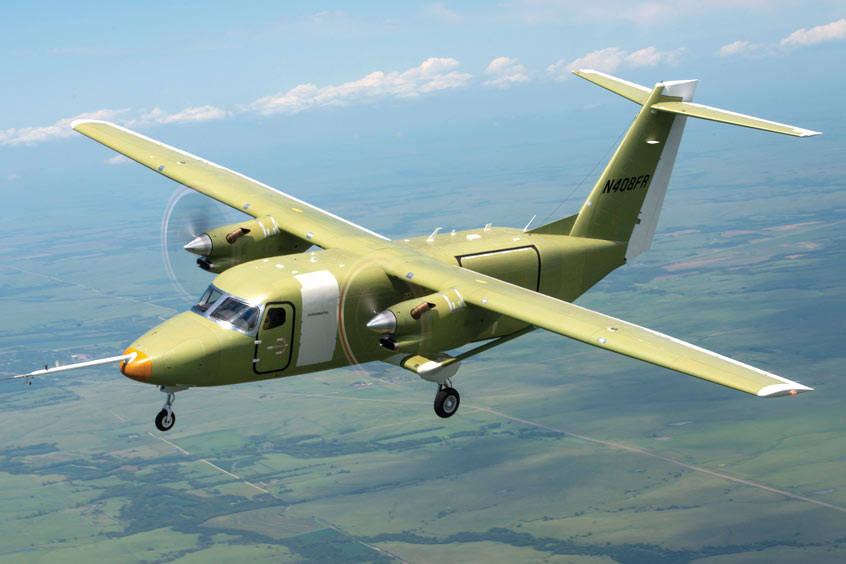Why visit ACE ’25?

Textron Aviation has completed the first flight of its second Cessna SkyCourier flight test article (P1). The milestone flight for the high-wing, large utility aircraft comes two-and-a-half months after the prototype SkyCourier first took to the skies on 17 May. The P1 aircraft is the first conforming production flight test aircraft and is the first airframe configured as a freighter.
The first flight of P1, piloted by Peter Gracey and Todd Dafforn, lasted one hour and 35 minutes, reaching a max altitude of 14,200 ft with a max speed of 210 kts. The aircraft will be used for the flight test programme, primarily for systems testing, including propulsion, environmental control and avionics.
“This flight is another important step for the Cessna SkyCourier programme as it will be used primarily for testing aircraft systems like avionics, environmental control and anti-icing,” explains Chris Hearne, senior VP of engineering and programmes. “Since the debut flight for the prototype aircraft, the team has rapidly moved through testing and has accomplished its goals of initial envelope expansion and handling, including stalls. When you consider they have achieved all these milestones despite the many disruptions caused by a global pandemic, it's quite remarkable. The Cessna SkyCourier programme is heading through the second half of 2020 with a great deal of momentum.”
The aircraft joins the Cessna SkyCourier prototype in the flight test certification programme, which will include three variations of flying aircraft. Since the Cessna SkyCourier prototype completed its first flight in May, the aircraft has successfully completed 38 flights and logged more than 76 flight hours. Through the flights, the team has been able to expand speed and centre-of-gravity envelopes, complete preliminary engine and propeller tests, as well as initial stability and manoeuvrability tests.
The Cessna SkyCourier will be offered in various configurations including a 6,000 pound payload capable freighter and a 19 seat passenger version, all based on the common platform. Designed for high utilisation, the aircraft will look to deliver a combination of robust performance and lower operating costs. The aircraft features the popular Garmin G1000 NXi avionics suite and offers highlights such as a maximum cruise speed of up to 200 ktas and a maximum range of 900 nm. It will include single-point pressure refuelling as standard to enable faster turnarounds.